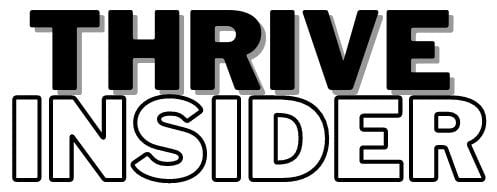I recently had the opportunity to catch up for a chat with Mark Richardson, a Nutritionist from Australia. Mark’s health journey began at a very young age when he became ill. He had suddenly developed some form of chronic fatigue. This made general life more challenging for him. Progressively he developed sleep issues, food intolerance and many other frustrating and life limiting symptoms.
I guess for me I can only expect that it would be like living everyday burnt out with a hangover. These types of illnesses are often referred to as “invisible illnesses”. It’s quite amazing how, if you have an accident someone will say, oh no you broke your arm, but invisible illness is often attributed to being “all in your head” or just lazy and that is far from the case.
As I now begin to learn that with “invisible illness” you are frequently labelled as lazy or faking it. The labels that are associated with judgment is treating a person very unfairly. I wanted to ask Mark more about the role of this judgment and its direct contribution to anxiety and depression. He went on to explain this aspect of illness is often overlooked and it’s a form of Post Traumatic Stress Disorder.
In fact there are a significant number of people who resolve the medical or functional impairment and are left with the PTSD. He brings us to another understanding that in some cases medications are used to medicate the symptoms of the treatment, rather than the illness.
We are really only just scratching the surface as we begin to look at people who suffer in silence or even end up with self harm in other ways. These behaviours may be counter-productive however, that is a lesser impact than reaching out for help and being denied or judged. They are often afraid of being told it’s not a real illness. There are many people who use alcohol and other drugs as a coping mechanism.
There really seems to be a trend to endeavour to introduce “ depression type approaches” and medication for chronic illness in these circumstances. Mark was really pleased to have the ability to chat about this as he is very passionate about the mental health aspects in chronic illness.
Mark goes on to explain that labels can be just as bad. Forty or fifty years ago “Chronic Fatigue” basically meant you were lazy and you were treated accordingly. His recollection is like a time capsule of five decades as understanding evolved. We have come a long way in that half century and the amount of subset categories that fatigue illness has now, is leading to better understanding, management and treatment.
I asked Mark if could share an example of such a new understanding, he said there are quite a lot, and began to talk about compression syndromes and sometimes they can be involved in movement. Mostly they can be classified as sensitivity to loading that the body reacts to.
From a mechanical point of view, when critical structures become periodically compressed, the body freaks out like life and death. That can be referred to as trauma because so many systems are put on high alert or suspended from duty as a result of the threat. Every time this happens the nervous system remembers and that may very well play a key role in PTSD.
The body is faced with unconscious decisions within the nervous system. In basic terms there are two branches of the nervous system, the sympathetic branch that is the flight and fight for danger and the parasympathetic that’s calm for rest and repair. The natural choice is that the flight and fight will respond to the perceived threat even though in a physical sense there is no external threat. It’s just like driving a car with the park brake on.
I wanted to learn more about how this applied to nutrition? Mark explained in these situations we may have very little control over the autonomic nervous system’s state or dominance. Understanding how the sympathetic branch will respond around nutrition and when it was activated it was a game changer. We now had the ability to prescribe nutrition based on what the body could process at that time.
This was also true during parasympathetic dominance that he later explored in a provocation study. As we started digging deeper we began to see that both Autonomic branches could be driven to excess at the same time and that may be referred to as Autonomic instability. We now have the ability to lessen the systemic impact by the use of nutrition.
In one example Mark explains by matching the fuel to the task it creates a sense of ease as the body is prepared for it. The same is true when it’s unmatched. It can create anything from anxiety to an energy crash.
I find this absolutely fascinating that such an understanding challenges the way we apply nutrition in this health space. As I reflect on Mark’s own illness I can clearly see almost out of tragedy, he was driven to new discoveries.
I’m really looking forward to catching up with Mark in the future for an update,







More Stories
Navigating The Dynamics Of A Son-Father Relationship
3 Reasons Why Oral Health is Important
How to Improve Indoor Air Quality in Your Home